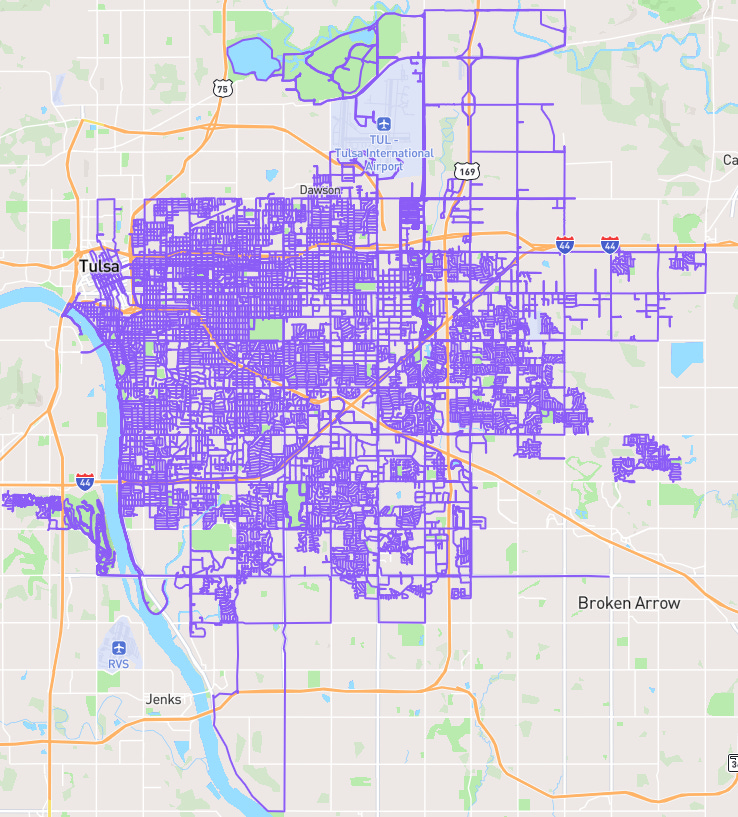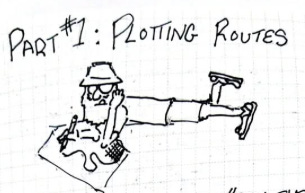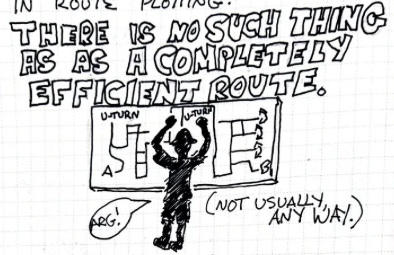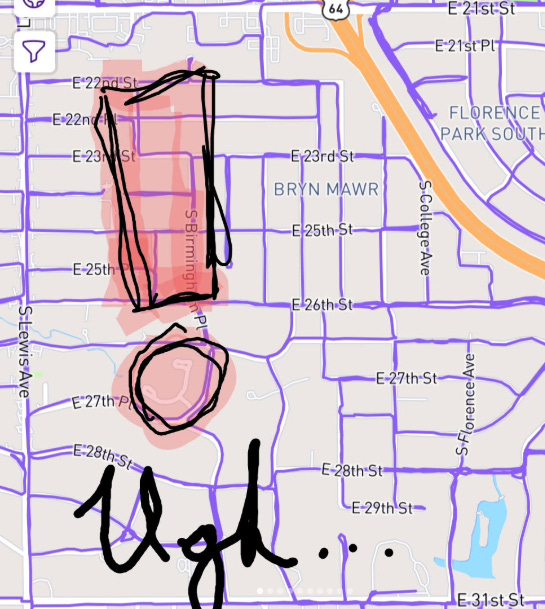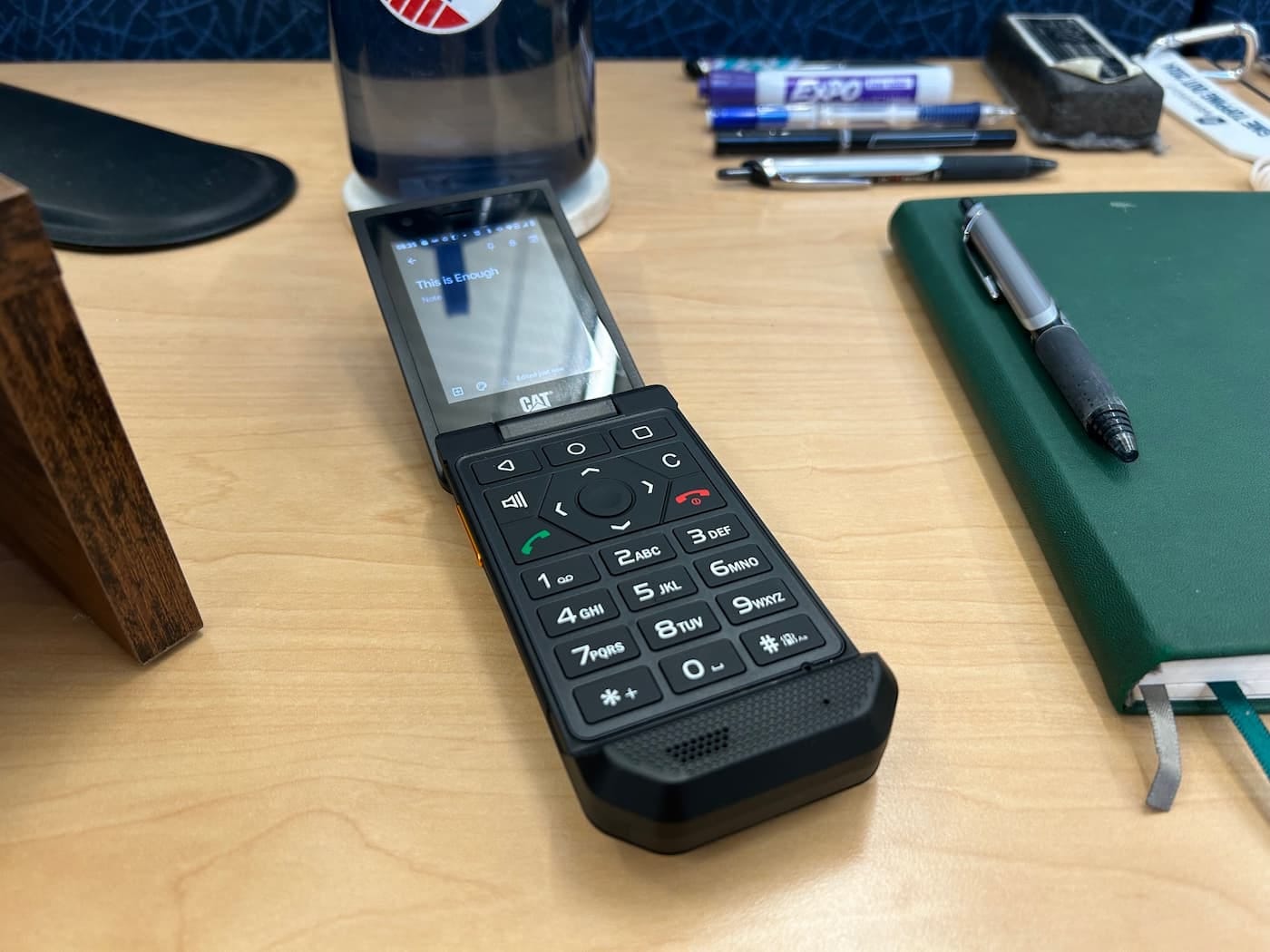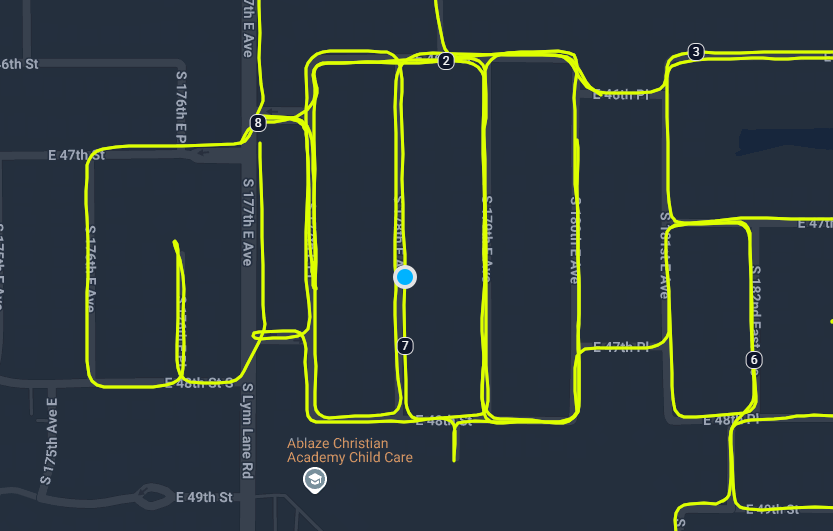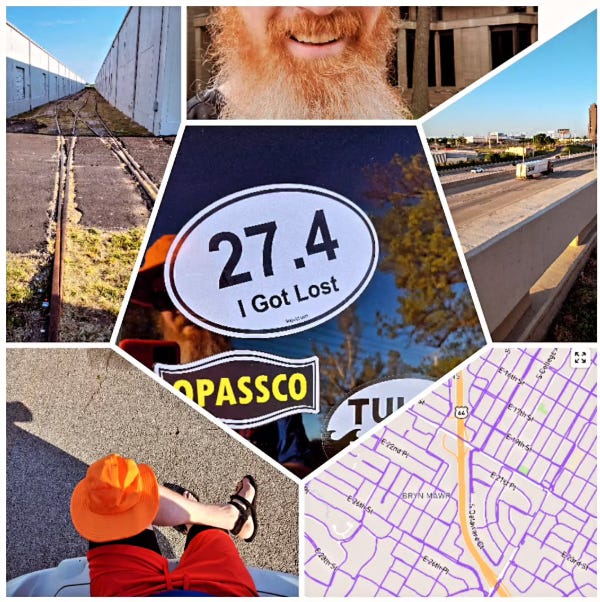In Defense of Periodic Intentional Inefficiency: Running Every Street in Tulsa
Why it occasionally pays to be intentionally inefficient.
This is another guest post from my new blog documenting my project of running every single street in Tulsa, OK.
I’ve been intentionally running every single street in Tulsa, OK in since August 2023. In that time, I’ve managed to complete 35% of all named streets and make progress on many others.
Ken, that’s about a year and a half. Why aren’t you further along?
When I first began, I approached route plotting with surgical precision and the focus of a chessmaster—or at least a talented checkers player. Every route needed to cover as many feet of street as possible with the least amount of overlap possible.
This meant that I would often spend as much time plotting the routes as I would running them. What would make for an incredibly efficient run meant an inefficient overall process.
Why? Well, there’s no such thing as completely efficient route.
The Frustrating Fragility of a Carefully Designed Plan
Even in a largely grid-pattern city like Tulsa, routes will require making u-turns or re-running blocks for the sake of progressing to the next street over. And even if you think you’ve got your route plotted, you may end up skipping a section during your run—derailing your grand design.
I also noticed a strange correlation—the more I obsessed about the “perfection” of the route, the less I enjoyed the run. One GPS-hiccup or navigational glitch could throw me off course and toss a monkey wrench in my plan, leaving me huffing more than puffing.
Oddly enough, it took hardware limitations to help me discover a less efficient—yet more satisfying—means of plotting and running these routes going forward.
Flip Phone Epiphanies
Around the time of these frustrations, I was on a separate mission of digital minimalism. For the sake of “re-tool-izing” my relationship with my phone and reducing unwanted distractions, I intentionally downgraded to a more limited phone. While this decision ultimately provided literally hours a day not gazing into a screen and many books read per month, I greatly underestimated the blow it would strike against my ability to navigate my “every single street” runs.
Though this “new” phone had GPS capabilities, they did not like to be tested. It boasted a screen the size of a matchbox, resolution of a potato, treated u-turns with contempt, and connectivity with spite. Uploading my painstakingly crafted GPX routes into this device was akin to spoon-feeding caviar to a toddler. Before I knew it, I found myself not only frequently off-route, but even literally lost in the dark—having to putz around, using the glow of a hastily generated Google Maps route just to find my way back to my car. Oof.
Longer, But Better
With the Ghost of Mis-Navigated Run’s Past sitting on my shoulder, I sat down one day to plot the route for the day’s run. As I plotted strategic manuevers, I could hear the Ghost whisper.
“Tsk, tsk, tsk—the dumb phone isn’t going to like that at all.”
Agreeing to the soft voice, I intentionally gave the route a wide birth, wrapping it one more time around the block to simplify the trajectory and limit flip-phone confusion—even though doing so added an extra quarter-mile to the route. Eeeek, those are going to add up, I thought.
But then another thought emerged: So what? If it means a less complicated run with fewer drastic manuevers, what’s the problem with a few more miles?
So, I gave it a shot—plotting a route at times doubled or even tripled over on itself in some spots, all to avoid navigational mishaps.
What resulted was one of the most pleasurable runs I’d experienced in months. No sharp manuevering meant no navigational issues. I had made it the entire way guided by the phone’s audio turn-by-turn cues alone—never having to pull up the tiny map on the tiny screen to view where I’d made massive mistake.
I repeated the same strategically relaxed route plotting on subsequent runs—most with the same relaxed navigated running experience.
Are my routes becoming increasingly less efficient?
Will this style of route plotting add days, weeks, months, or even years before I complete running every single stride of every single street within the Tulsa city limits?
Maybe. But I’ll get there eventually.
Besides, the goal is the doing—not so much the “done.”
This bizarre experiment with purposeful inefficiency made me wonder:
What other aspects will allow trading greater efficiency for greater satisfaction?
I’m running over 100 miles in April 2025 to raise funds for the American Cancer Society. Help me hit my goal here.





